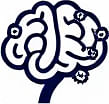The Six Thinking Hats Mental Model
 by Shanie Goodwin
by Shanie Goodwin
The Six Thinking Hats offers a structured way to approach problems by considering different perspectives. This model, created by Edward de Bono, helps improve decision-making through focused thinking styles, making it valuable for teams and individuals in various fields.
The Six Thinking Hats is a mental model that provides a framework for better decision-making. It encourages people to explore ideas from multiple angles, fostering clearer and more balanced thoughts.
What is the Six Thinking Hats Model?
This model divides thinking into six distinct categories, each represented by a different colored hat. By switching hats, individuals or groups can systematically examine issues without bias.
The concept originated from Edward de Bono, a psychologist known for his work on creative thinking. He developed this approach to help people move beyond traditional debate styles and promote parallel thinking.
Breaking Down the Six Hats
Each hat symbolizes a specific mode of thought. Let's look at them one by one.
First, the White Hat focuses on facts and data. When wearing this hat, you gather information and stick to what is known, avoiding speculation. For example, in a business meeting, it might involve reviewing sales figures or market trends.
Next, the Red Hat deals with emotions and intuition. This hat allows expression of feelings without needing justification. It helps acknowledge hunches or gut reactions that could influence decisions.
The Black Hat highlights potential risks and downsides. It is about being cautious and pointing out flaws in plans. This mode ensures that ideas are tested for viability, making it essential for avoiding pitfalls.
In contrast, the Yellow Hat emphasizes benefits and optimism. Here, you look for the positive aspects and value in proposals, encouraging an upbeat view to balance out criticism.
The Green Hat promotes creativity and new ideas. It is the space for brainstorming and innovation, where wild suggestions are welcomed to generate fresh solutions.
Finally, the Blue Hat manages the overall process. It involves organizing the discussion, setting agendas, and ensuring that the other hats are used effectively.
Why Use the Six Thinking Hats?
This mental model is particularly useful in professional settings like business meetings or team collaborations. It structures conversations to cover all bases, reducing conflicts and improving outcomes.
In psychology, it aids cognitive development by training the mind to switch perspectives. This flexibility can enhance problem-solving skills and emotional intelligence.
For everyday life, applying the hats can help with personal decisions, such as choosing a career path. By examining options through each lens, individuals make more informed choices.
Practical Ways to Apply It
To get started, begin with a clear objective. Then, assign hats to participants or switch them yourself during a session. Keep sessions short and focused to maintain engagement.
For instance, in a project team, start with the White Hat to review data, move to the Green Hat for ideas, and end with the Black Hat to check for issues.
Over time, regular use of this model can build better habits in thinking, leading to more effective strategies in work and personal growth.
Benefits for Different Groups
Professionals in business find it simplifies complex discussions, while lifelong learners appreciate how it deepens cognitive skills. Curious individuals can use it to explore topics more thoroughly, turning abstract ideas into actionable plans.
By incorporating the Six Thinking Hats into daily routines, people often notice improved clarity and reduced stress in decision-making processes.
In summary, this mental model offers a straightforward yet powerful tool for enhancing thinking. Its simplicity makes it accessible, while its depth provides lasting value for anyone interested in better cognitive practices.
